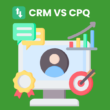Table of Contents Show
In the dynamic world of business strategy and performance management, two acronyms frequently stand out: OKR and KPI.
These frameworks are instrumental in setting goals and measuring success, but they serve different purposes and are often misunderstood or conflated.
In this blog, we’ll dive deep into OKRs and KPIs, unraveling their differences, applications, and how they can be harmoniously integrated to drive productivity and organizational success.
Understanding the Basics: OKRs vs KPIs
What are OKRs?
OKRs, or Objectives and Key Results, are a goal-setting framework that helps organizations set ambitious goals with measurable results. The beauty of OKRs lies in their simplicity and flexibility.
An Objective defines what is to be achieved, aspirational and qualitative, while Key Results are the milestones that measure progress towards that objective, quantitative and time-bound.
For example, an Objective might be “Expand the company’s market presence,” with Key Results like “Increase customer base by 20%” or “Launch in 3 new countries.”
What are KPIs?
KPIs, or Key Performance Indicators, are metrics used to evaluate the success of an organization or a specific activity in which it engages.
Unlike OKRs, KPIs are purely quantitative and often focus on operational performance and efficiency. They provide ongoing monitoring like a car’s dashboard provides speed and fuel levels.
A KPI could be as straightforward as “Monthly Sales Revenue” or as specific as “Customer Satisfaction Score.”
OKR vs KPI – The Key Differences
While OKRs are about setting and reaching ambitious goals, KPIs are about measuring performance against existing standards.
OKRs are typically set quarterly, pushing teams to stretch and achieve more.
KPIs, on the other hand, are often tracked monthly or even weekly, providing a continuous pulse on performance.
Here’s a table summarizing the key differences between OKR (Objectives and Key Results) and KPI (Key Performance Indicators):
| Feature | OKR (Objectives and Key Results) | KPI (Key Performance Indicators) |
| Definition | A goal-setting framework used to set and track ambitious, measurable goals. | Metrics used to evaluate the success and efficiency of specific activities or processes. |
| Purpose | To drive strategic initiatives and encourage ambitious goal-setting. | To monitor and measure performance and operational efficiency. |
| Scope | Aspirational and broad, aiming for significant impact or change. | Operational and specific, focusing on the ongoing performance of activities. |
| Nature | Qualitative objectives supported by quantitative results. | Quantitative metrics that provide ongoing monitoring. |
| Timeframe | Typically set and reviewed quarterly or annually. | Often tracked continuously, with frequent reviews (e.g., monthly, weekly). |
| Flexibility | Designed to be flexible and adaptable; OKRs can be updated as priorities shift. | Generally stable over time, unless there are significant changes in operations or strategy. |
| Examples | Objective: “Increase brand awareness globally.” Key Results: “Achieve 25% increase in social media engagement,” “Secure 3 major media partnerships.” | “Customer Satisfaction Score (CSAT),” “Monthly Recurring Revenue (MRR),” “Employee Turnover Rate.” |
Delving Deeper – Applications and Examples
OKR Examples in Practice
Consider a tech startup aiming to revolutionize the industry. An OKR might be:
- Objective: “Become the leading player in the tech industry.”
- Key Results: “Secure $2 million in funding,” “Increase user base by 50%,” and “Launch two new innovative products.”
This OKR sets a clear, ambitious goal with tangible, measurable outcomes.
KPI Examples in Practice
For the same tech startup, relevant KPIs could include “Monthly Active Users,” “Average Revenue Per User,” and “Net Promoter Score.”
These KPIs provide ongoing insights into the company’s operational performance and customer satisfaction, crucial for making informed decisions.
Best Practices for Implementing OKRs and KPIs
Implementing OKRs (Objectives and Key Results) and KPIs (Key Performance Indicators) effectively is crucial for organizations aiming to align their strategies with operational execution and drive performance.
While OKRs help set ambitious goals to inspire and challenge teams, KPIs measure ongoing performance to ensure the organization stays on track. Here are some best practices for successfully implementing both OKRs and KPIs:
Best Practices for Implementing OKRs
1. Align OKRs with Organizational Vision
Ensure that OKRs at all levels (company, team, and individual) align with the overarching vision and goals of the organization. This alignment ensures that every effort contributes to the broader objectives, creating a cohesive and unified direction.
2. Set Clear, Ambitious Objectives
Objectives should be inspiring and challenging, pushing teams beyond their comfort zones. However, they should also be clear and concise, so everyone understands what is aimed for and why it matters.
3. Define Measurable Key Results
Key Results should be quantifiable and time-bound, providing a clear measure of success. They should be challenging yet achievable, offering a clear path to gauge progress towards the objectives.
4. Encourage Participation and Ownership
Involve team members in the OKR-setting process to foster engagement and ownership. When individuals contribute to goal setting, they’re more invested in the outcomes and motivated to achieve them.
5. Review and Adjust Regularly
OKRs are not set in stone. Regular reviews (e.g., quarterly) are essential to assess progress, celebrate achievements, and adjust objectives and key results as needed to reflect changes in priorities or challenges encountered.
Best Practices for Implementing KPIs
1. Select Relevant KPIs
Choose KPIs that are most relevant to your organization’s strategic goals and operational efficiency. Avoid vanity metrics that look good on paper but don’t contribute to real progress or insights.
2. Establish Clear Benchmarks
Set clear benchmarks or targets for each KPI to provide context for what constitutes good performance. Benchmarks can be based on historical data, industry standards, or strategic goals.
3. Integrate KPIs into Daily Operations
Ensure that KPI tracking is integrated into the daily operations of the relevant teams or departments. This integration helps maintain focus on performance and facilitates timely decision-making.
4. Use Visual Dashboards
Visualize KPI data using dashboards that provide at-a-glance insights into performance. This visualization makes it easier for teams to understand trends, spot issues, and take corrective actions.
5. Foster a Data-Driven Culture
Cultivate a culture that values data-driven decision-making. Encourage teams to regularly review KPIs, understand the stories behind the numbers, and base their actions on insights gained.
Synergizing OKRs and KPIs
- Integrate OKRs and KPIs: Use KPIs to measure the success of your OKRs and ensure that your strategic goals are in line with operational performance.
- Communicate Clearly: Ensure that everyone in the organization understands how OKRs and KPIs complement each other and how they contribute to the overall success of the organization.
- Celebrate Successes: Recognize and celebrate when key results are achieved and when KPI targets are met. This recognition fosters a positive culture around goal achievement and continuous improvement.
Implementing OKRs and KPIs with these best practices can help organizations set clear, ambitious goals and ensure they have the mechanisms in place to measure and achieve success.
This strategic alignment and operational excellence drive organizations toward their vision, fostering growth and adaptability in an ever-changing business landscape.
Challenges For OKRs and KPIs
When implementing OKRs (Objectives and Key Results) and KPIs (Key Performance Indicators), organizations often encounter common pitfalls that can undermine their effectiveness and hinder their progress.
Recognizing and avoiding these mistakes is crucial for leveraging the full potential of these powerful frameworks. Here are some of the most common errors made with OKRs and KPIs:
Common OKR Mistakes
1. Setting Too Many Objectives
One of the most frequent missteps is setting too many objectives within a single cycle, leading to diluted focus and diminished execution. It’s essential to prioritize and concentrate on a few critical objectives that will have the most significant impact.
2. Overly Ambitious Key Results
While key results need to be challenging, setting them unrealistically high can be demotivating when they persistently fall out of reach. Finding a balance between ambitious and achievable is key.
3. Lack of Alignment
Failing to align OKRs across different levels of the organization can lead to misaligned efforts and resources, diluting the overall impact. Ensuring that individual, team, and organizational OKRs complement and support each other is vital for cohesive progress.
4. Ignoring Progress Reviews
Neglecting regular check-ins to review progress toward key results can lead to stagnation and a lack of accountability. Frequent reviews help maintain momentum and provide opportunities for course correction.
5. Treating OKRs as a Checklist
Treating OKRs merely as a set of tasks to tick off undermines their purpose. OKRs are meant to drive growth and improvement, not just to complete tasks. The focus should be on achieving broader objectives through measurable results, not just ticking off tasks.
Common KPI Mistakes
1. Choosing Irrelevant KPIs
Selecting KPIs that don’t align with business goals or operational realities can result in wasted effort and resources. It’s crucial to choose KPIs that are directly related to core objectives and can provide actionable insights.
2. Overloading on KPIs
Tracking too many KPIs can overwhelm teams and dilute focus from the most critical indicators. It’s better to focus on a smaller set of KPIs that truly reflect business performance and priorities.
3. Not Updating KPIs
Failing to regularly review and update KPIs can lead to stagnation and irrelevance. As business goals and environments evolve, so too should the KPIs to ensure they remain aligned with current objectives.
4. Ignoring Context
Interpreting KPIs without considering context can lead to misguided conclusions and decisions. It’s essential to understand the factors influencing KPI performance to make informed decisions.
5. Lack of Communication
Failing to effectively communicate the importance, purpose, and progress of KPIs throughout the organization can lead to disengagement and a lack of accountability. Clear, consistent communication ensures everyone understands their role in achieving key metrics.
Avoiding Mistakes with OKRs and KPIs
To avoid these common mistakes, organizations should:
- Prioritize and focus on a limited number of OKRs and KPIs that are most impactful.
- Set realistic, achievable, and aligned objectives and key results.
- Ensure regular review and adjustment processes are in place.
- Foster a culture of transparency, communication, and accountability around OKRs and KPIs.
- Educate and train teams on the purpose and best practices of using OKRs and KPIs effectively.
Conclusion
OKRs and KPIs are not competitors but complementary tools in the arsenal of any organization aiming for growth and efficiency. By understanding and implementing these frameworks effectively, businesses can navigate the complexities of modern markets with agility and confidence, turning ambitious visions into tangible successes.
Have you experienced the transformative power of OKRs and KPIs in your organization? Or are you looking for more guidance on implementing these frameworks effectively?
Share your stories or reach out for a deeper discussion on harnessing the full potential of OKRs and KPIs to drive your organizational goals forward.
Resources You May Like:










